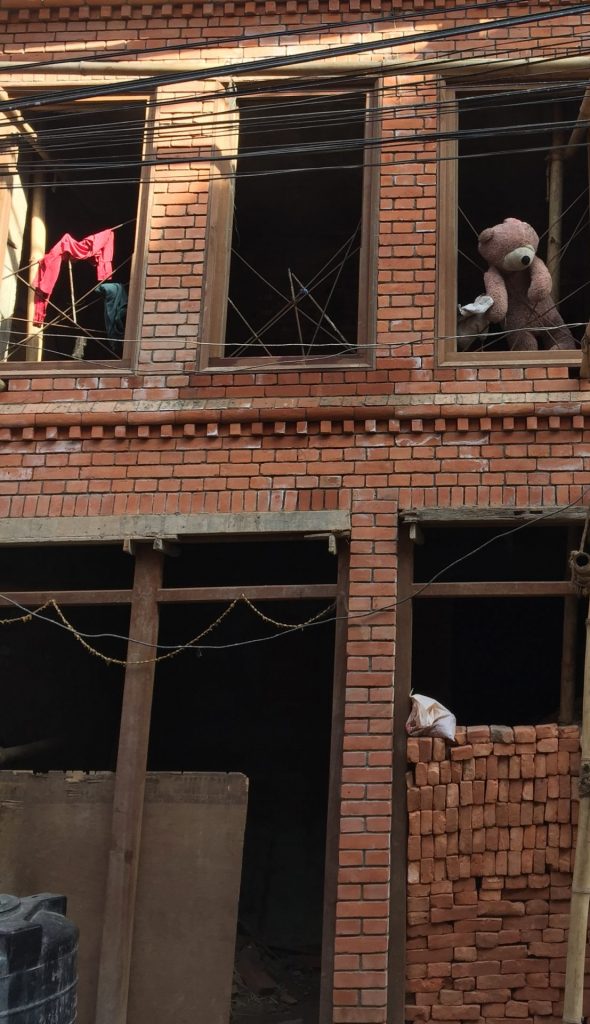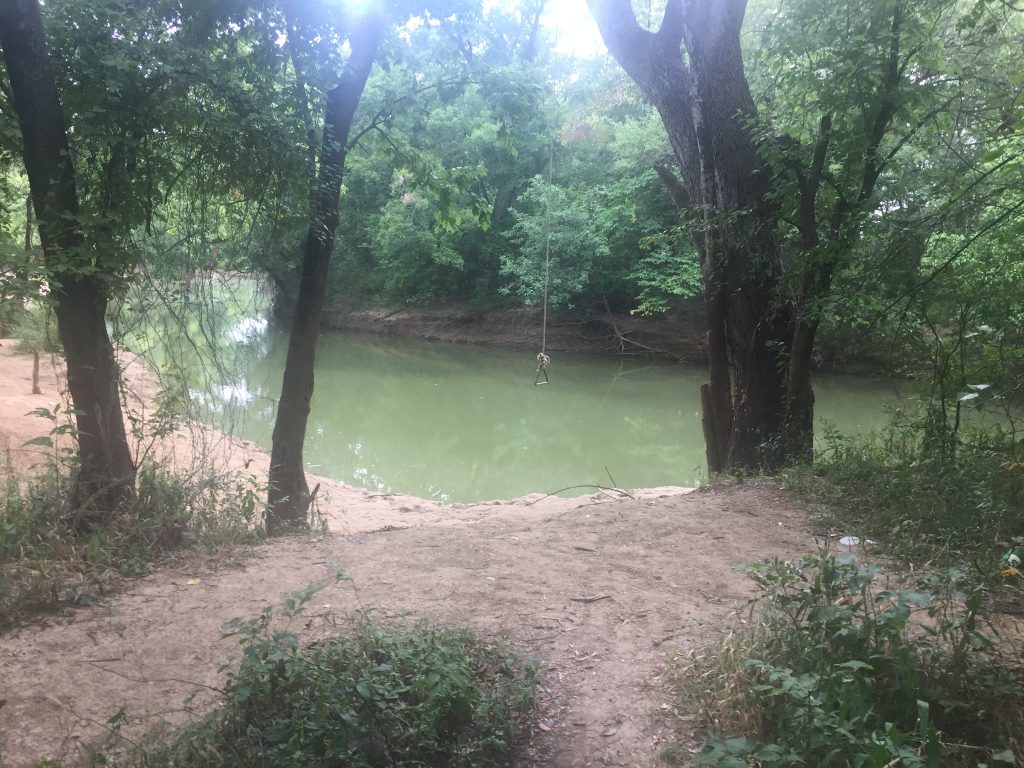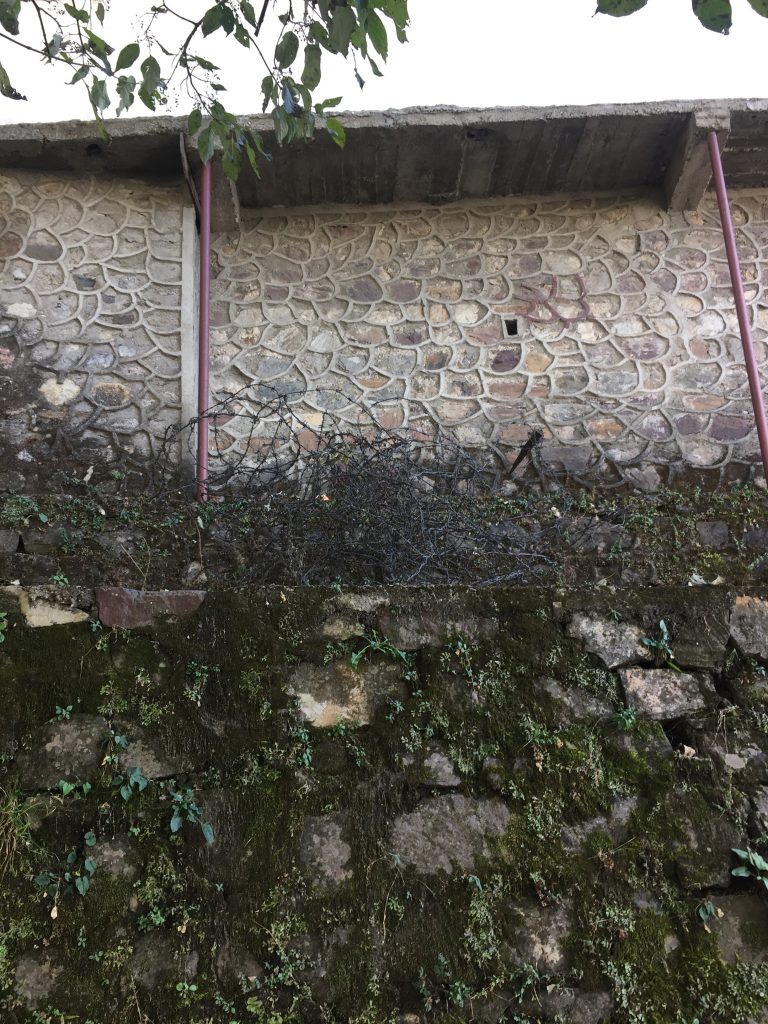Permission to Go
‘A troubling things occurs when men find themselves reflected in the symbol of the ambiguous walking man that shines white at American crosswalks to signal the way forward. They seek anonymity. They shave their heads. They become enchanted with dichotomy, sure that life is a crossroads at every turn. They become strange.
Thusly changed, the strangers understand liberty only when faced with barriers. They unbind without knowing whether chains hold inmate or anchor. They topple walls without consideration for structure or cold. They understand the forest as both freedom and hindrance, so that the paths they carve there wind deeply and without purpose.
They see the revelation at the crosswalk as a new manifest destiny and they evangelize, in a way, sure that the uninitiated resist crossing only for having forgotten to press the button.’
–excerpt, Unattributed Writings on the Origins of Strangers
I recognize the passing of two state borders before the strangers think to press an empty case of beer over my head, twisting it so that the position of the handle roughly corresponds to my mouth. Night falls and the bed of the pick-up grows dreadfully cold. I squirm forward until my body is pressed up against the back of the cab. Inside, the voices of the strangers are loud, jovial. They laugh often. I can’t make out any words.
I sleep for an indeterminate amount of time. Light creeps in through the crude mask. The mouth gap has softened under the constant barrage of my breathing. I chew at it, thinking I might tear a strip upward. In the end, I only manage to make the orifice jagged.
It’s warm again when the truck finally stops. The strangers announce themselves with their fingers, prodding me here and there until the knots loosen. I hear the tailgate screech open- am dragged into a sitting position, pulled to standing. The ground beneath me is gravel. It’s hot, now. I would happily trade my life’s temperature extremes for an unending 65 degrees. Someone speaks ahead of me, asking a question they should have considered earlier:
“You’re the guy from a while back, right?”
I spit a wad of cardboard and the sound of its impact is close and satisfying. The improvised hood is torn away and the world becomes painfully bright. My eyes adjust in time to see the stranger prepare a world-ending sucker punch.
The world ends for a second or two. Its return is nauseating.
We’re in the parking lot of a stadium.
I’m dragged inside.
The stadium is open air but it reeks of exhaust. Strangers populate the bleachers, maybe a hundred total are scattered about in sparse groups. A few throw popcorn at me as we pass but my entrance is otherwise unremarkable. At the crest of the stairs I make out the entertainment- a sort of demolition derby is in motion below, all of it confined to a shallow pit in the shape of a man. I shudder as the pit seems to shift, its walls colliding with a van. The vehicle lifts and spins, finally rolling to a stop on its side. A stranger crawls from the wreckage, limping on a broken leg. The pit shifts again and the earth seems to consume him. I trace its shape back to the bleachers and spy a silhouetted form at the top.
The game is played in the shadow of the King of Strangers. He looks in my direction and shatters an old sedan below. The crowd cheers.
I’m led up through the gathered men. A few more people throw food. Most look, now, having traced the attention of the man above them. They release me as we near the King of Strangers, their encouragement rough, silent, and clear: approach. Given no other choice, I do, and I see my shadow join his in the vast circle below.
“You’ve returned my man,” he says.
“There was something wrong with him.”
“Yes.”
The King of Strangers wears a cardboard crown, lifted from some nearby fast food chain. It fits painfully tight, cutting into the skin of his bald head. From a distance I would have said the man wore robes but, in reality, his clothes drape, in tatters, from his body.
“Something for you,” he says, and when he kneels to retrieve a book at his feet there are explosions below. The western wall of the stadium collapses when he hands it to me.
Cheers turn to screams.
“The man was a writer,” he says, “He was working on this when he… succumbed.”
The book he hands me is a copy of Shitholes.
“He was working on a published book?”
“He wrote in the margins.” I flip through the pages and see another book’s worth of text in the blank spaces. The letters are clean and straight, written in pen. The King of Strangers sees my admiration and adds: “The man believed he was above mistakes, which was not exactly true. He thrived in broken places, where small mistakes remained unnoticed. The book is yours now. You may go.”
‘May’ turns out to be an exaggeration. I’m grabbed by the waiting strangers and tossed out into the parking lot where my bag sits atop the bike. I intend to toss the gifted book at the next gas station but see that my captors have topped me up. By the time I stop, I’ve convinced myself to read it.
-traveler





